Contents
White cabbage is a well-known and favorite vegetable for a long time. In recent years, many hybrid varieties of cabbage of different ripening periods and more resistant to adverse external factors have appeared. One of them is a late variety – Ankoma F1 cabbage, which is widely used among gardeners.
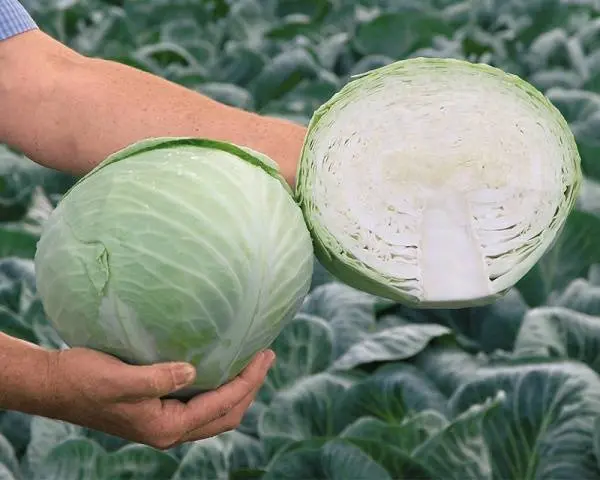
The late-ripening Ankoma hybrid, recommended for the Central region, shows excellent keeping quality and excellent taste. The value of late varieties, such as Ankoma cabbage, lies in the fact that they retain their taste and freshness throughout the winter period.
Useful Properties
The birthplace of white cabbage is the Mediterranean, it was known in ancient Greece. In Kievan Rus, its descriptions are found in manuscripts of the 11th century, and it was here that sauerkraut was first used.
Cabbage variety Ankoma F1 retains all the beneficial properties of white cabbage, for which it is appreciated by both vegetable growers and consumers:
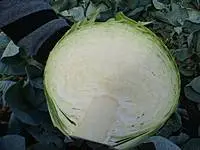
- the upper green leaves contain a lot of folic acid, which is involved in the synthesis of hemoglobin, and the lower, lighter leaves are useful for the prevention of atherosclerosis;
- a high concentration of ascorbic acid protects against colds in the off-season. Cabbage contains chemicals that prevent the deposition of cholesterol on the inner walls of blood vessels;
- fiber normalizes the digestive system;
- cabbage is a natural source of vitamins U and PP, which are known for their ability to heal small ulcers on the stomach lining.
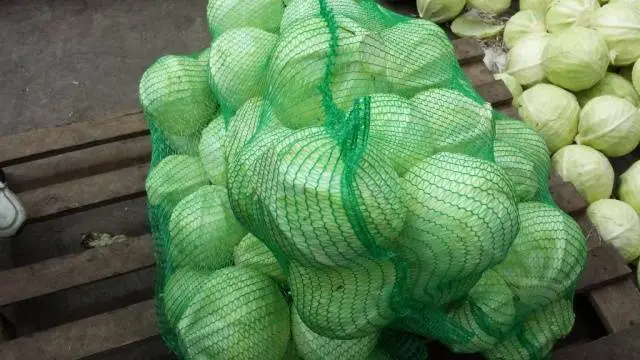
Characterization
Ankoma fork has a flat-round shape with good density and a short stalk. Ankoma cabbage is grown outdoors and is suitable for consumption both fresh and in preparations. It is excellently stored in winter, can withstand long-term transportation without losing its excellent presentation. Thanks to a well-developed root system, the Ankoma variety is resistant to dry periods. It is unpretentious to growing conditions and has good resistance to diseases, in particular, to Fusarium. The maturation period of Ankoma cabbage is 4,0-4,5 months from the moment of planting the seedlings. The yield with proper agricultural technology reaches 400-600 centners per 1 ha, and the weight of 1 head of cabbage is from 2 to 3 kg.
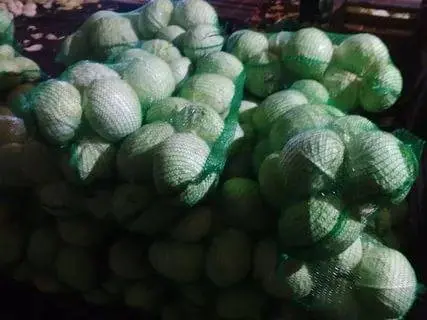
In order to plant seedlings of Ankoma cabbage in time in open ground, the description of the variety recommends sowing seeds already in the middle or end of March.
Ankoma cabbage seeds are sown in peat pots, in which they can then be planted in the soil.
The best way to grow seedlings of the Ankoma variety is in solar greenhouses, in which it becomes warmer during the day and cool at night. There is a natural hardening of plants, and they grow healthy and strong.
Soil preparation
The site for planting seedlings of the Ankoma variety should be adequately lit. With a lack of light, large leaves are formed, giving a loose head. Planting seedlings of cabbage is carried out according to the scheme 0,7×0,7 m. Too close location will negatively affect the yield. The soil should be not very loose and fertile enough, with acidity close to neutral. Cabbage Ankoma F1 grows well on loam. To prepare the soil in the spring, it is necessary to dig it up with compost and mineral fertilizers.
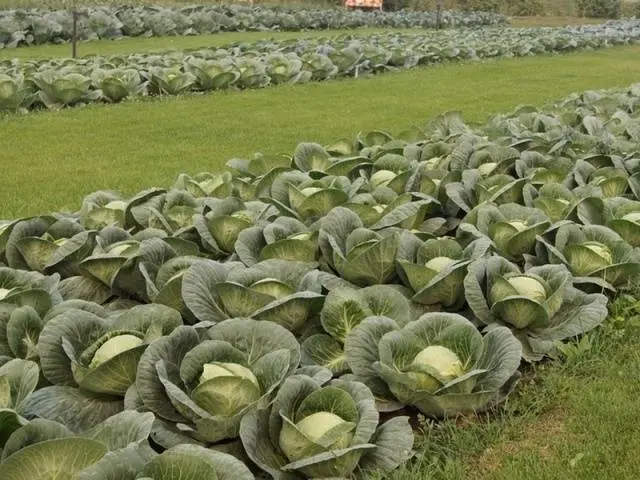
Planting seedlings
To transplant Ankoma seedlings into open ground, you need to choose a cloudy day, you can also plant it in the early morning or evening. Do not plant Ankoma cabbage in cool weather, as it can give arrows. In order for the seedlings to grow quickly, you need to plant it correctly:

- plants should be buried in the soil until the first leaf;
- the soil should be well compacted around each stem;
- all plants should be watered immediately after planting and the next day;
- for better adaptation of the Ankoma variety after transplantation, shade the seedlings for 2-3 days.
To disinfect already planted seedlings, you need:
- sprinkle it with wood ash – such treatment should be carried out after rains;
- regularly water the plants with a weak solution of potassium permanganate.
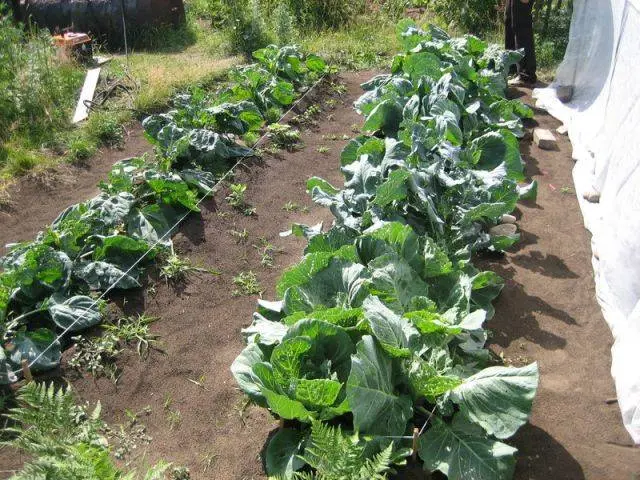
Many gardeners use the technology of seedless cultivation of cabbage. If you sow seeds directly into the soil, its growing season is reduced, and the root system becomes more powerful. The rules of care are the same as with the seedling method.
Watering mode
Within a month after planting the seedlings, Ankoma cabbage should be watered 2 times a week, and then once a week. During the formation of the rosette of leaves, the need for cabbage in water increases. Before the formation of a head, the water rate is quite large – about 1,5-2 buckets. Then it gradually decreases. If Ankoma cabbage is going to be stored after harvesting, watering should be stopped in about a month.
The following irrigation regime is more effective for the optimal development of Ankoma cabbage:
- it is better to carry it out 2 times a day – in the morning and in the evening;
- it is better to water more often and less – then the roots will be better supplied with oxygen and nutrition, stimulating the rapid growth of the head;
- after each watering, the soil around the plants must be loosened to ensure its breathability;
- Irrigation should be adjusted according to the weather.
Watering must be calculated very carefully – too high humidity threatens to crack heads. Lack of water is also dangerous:
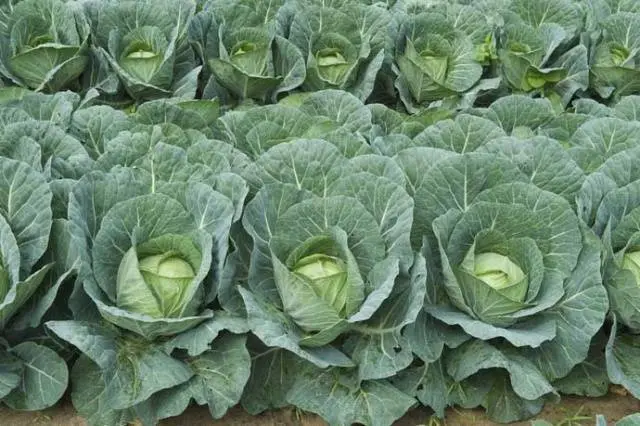
- the development of forks slows down;
- too hard leaves are formed.
Pest Control
Despite the resistance of Ankoma cabbage to pests, preventive treatment of plants from the most dangerous diseases is necessary – black leg, downy mildew, aphids and others. Treatment with a solution of copper sulfate is effective against fungal diseases. Gardeners also use proven folk remedies, such as an infusion of garlic, nettle, and dandelion.
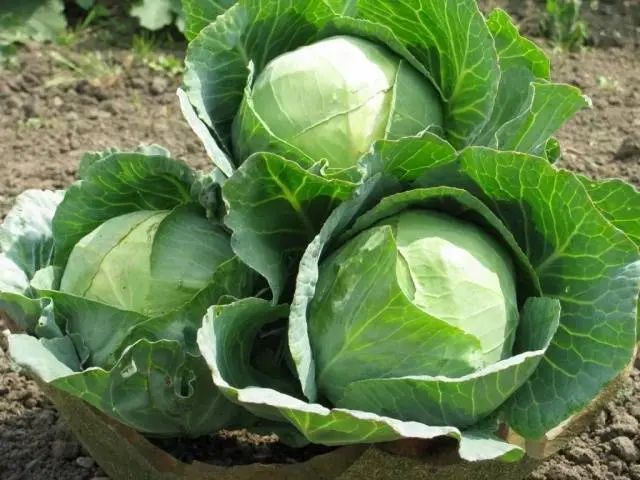
Reviews
Among gardeners, cabbage of the Ankoma variety is very successful, as evidenced by numerous letters from summer residents.
Conclusion
Cabbage variety Ankoma does not require much effort to grow. If you follow the simple rules of caring for her, she will provide rich supplies for the whole winter.









